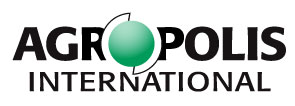Physical and chemical signals control morphogenesis at the shoot apical meristem
Résumé
Experiments indicate that physical stress in the shoot apical meristem of Arabidopsis controls at least two aspects of cell biology – the cortical cytoskeleton, and the subcellular location of the PIN1 auxin transporter. Cortical microtubules align in shoot apical meristem epidermal cells such that they are parallel to the principal direction of maximal stress when the stress is highly anisotropic. PIN1 is asymmetrically distributed in the plasma membranes of the same cells, with the highest amount in the membrane adjacent to the most stressed side wall.
Cellulose synthase complexes ride the cortical microtubules, thereby reinforcing cells in the direction of maximal stress, which is a negative feedback on stress, and tends to cause cells to expand orthogonally to the maximal stress direction. Auxin, however, weakens walls, allowing cells to expand proportionally to their auxin concentration. As expanding cells (whose direction of expansion depends upon wall anisotropy) stress their neighbors, the neighbors transport auxin preferentially to expanding cells, further increasing their auxin concentration. This is a positive feedback – high auxin in a cell attracts more auxin, and creates more stress.
These sets of feedbacks create a supracellular, tissue-wide feedback system that creates plant shape, controls phyllotaxis, and regulates hormone flow. This system has been amenable to computational modeling. The present set of models successfully predicts phyllotactic pattern (as auxin induces new leaves and flowers, and models of auxin transport reproduce the pattern of the new organs), rates of cell expansion, and developing models also treat direction of expansion and planes of cell division (which are dictated by the microtubule array).
Therefore, including cellular responses to physical stress is as important as including cell-cell signaling in models of shoot meristem morphogenesis, and considering the effects of mechanical stress (and therefore of tissue shape and cell wall properties) leads to highly predictive models.






